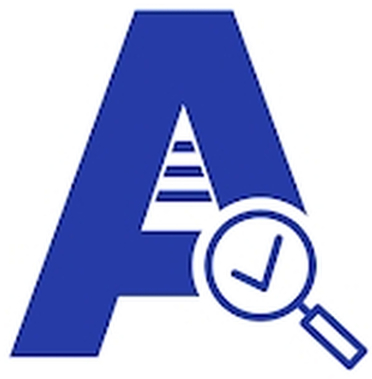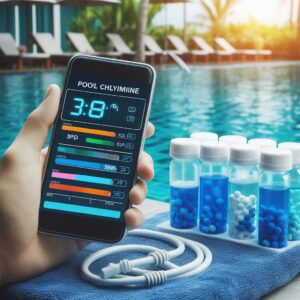Pool Chlorine Levels Checklist
Maintaining proper chlorine levels is crucial for keeping your pool water clean and safe. Here’s a Pool Chlorine Levels Checklist to understanding and managing chlorine levels in your pool:

Ideal Chlorine Levels
Free Chlorine
The ideal range is typically 1.0 to 3.0 ppm (parts per million). This is the amount of chlorine available to sanitize the pool water.
Combined Chlorine
Ideally, this should be as low as possible. It’s a byproduct of chlorine reacting with contaminants and should not exceed 0.2 ppm.
Total Chlorine
This is the sum of free chlorine and combined chlorine. It should be within the range of 1.0 to 3.0 ppm.
Testing Chlorine Levels
Testing Kits
Use a pool test kit or test strips to measure chlorine levels. Test the water at least 2-3 times a week.
Digital Meters
For more accuracy, use a digital chlorine meter.
Adjusting Chlorine Levels
Increasing Chlorine Levels
Add Chlorine Tablets
Place them in the pool skimmer or a floating dispenser.
Use Liquid Chlorine
Pour it directly into the pool, usually in the deep end.
Granular Chlorine
Dissolve it in a bucket of water before adding it to the pool.
Decreasing Chlorine Levels
Dilution
Add fresh water to the pool. This will lower the concentration of chlorine.
Chlorine Neutralizers
Use a commercial product designed to reduce chlorine levels. Follow the manufacturer’s instructions.
Maintaining Stable Levels
Regular Testing
Test the water frequently, especially after heavy pool use or after adding chemicals.
Proper Filtration
Ensure the pool filter is functioning correctly and run it for at least 8 hours a day.
Balanced pH
Keep the pH level between
7.4 and 7.6
. A balanced pH helps chlorine work more effectively.
Troubleshooting
High Combined Chlorine
If you have high combined chlorine (chloramines), perform a shock treatment to break it down. This involves adding a large amount of chlorine to the pool to bring the levels back to normal.
Low Chlorine Levels
If chlorine levels are consistently low, check for potential issues like high bather load, rain, or sunlight, which can deplete chlorine levels.
Safety Tips
Store Chemicals Properly
Keep chlorine products in a cool, dry place away from direct sunlight and other chemicals.
Handle with Care
Wear gloves and goggles when handling chlorine products to avoid skin and eye irritation.
Here’s a Pool Chlorine Levels Checklist for maintaining proper chlorine levels in your pool:
Daily:
Check Chlorine Level
- Use a pool test kit or strips.
- Aim for 1-3 ppm (parts per million) for residential pools.
Inspect Pool Appearance
- Look for cloudiness, algae, or debris.
Weekly:
Test pH Level
- Ideal range: 7.2-7.8.
- Adjust pH if necessary using pH increaser or decreaser.
Check Total Alkalinity
- Ideal range: 80-120 ppm.
- Adjust if necessary.
Inspect and Clean Pool Equipment
- Skimmers, filters, and pumps.
Shock the Pool
- Perform if chlorine levels are low or if the pool has been heavily used.
Monthly:
Test Calcium Hardness
- Ideal range: 200-400 ppm.
- Adjust if necessary.
Inspect Pool Surface
- Look for signs of wear, cracks, or leaks.
Check Stabilizer/Cyanuric Acid Levels
- Ideal range: 30-50 ppm.
- Adjust if necessary.
Seasonal:
Deep Clean the Pool
- Brush and vacuum thoroughly.
Check Pool Cover and Winterizing Procedures
- Ensure proper winterization if closing the pool.
Additional Tips:
Avoid Over-Chlorination
Too much chlorine can be harmful.
Monitor Pool Usage
Adjust chlorine levels based on bather load.
Keep Records
Maintain a log of test results and any chemical adjustments made.
Regular maintenance will help keep your pool clean and safe for swimming.
1. Choose the eAuditor Audits & Inspection
Compatibility
Ensure the eAuditor Audits & Inspection is compatible with your smartphone and any connected devices (like smart sensors) you might use.
Features
eAuditor includes features such as real-time monitoring, alerts, historical data tracking and customizable Pool Chlorine Levels Checklist.
2. Set Up the eAuditor Audits & Inspection
Download and Install
Download the eAuditor Audits & Inspection from your device’s app store and install it.
Create an Account
Register an account if required, and set up your profile and pool details.
3. Connect Your Devices
Manual Input
If you are entering data manually, ensure you have a reliable pool test kit or digital meter for accurate readings.
4. Input Pool Details
Pool Size
Enter the size of your pool (volume or surface area).
Chlorine Levels
Input your current free chlorine, total chlorine, and combined chlorine levels.
5. Monitor Chlorine Levels
Manual Updates
If entering data manually, update the eAuditor Audits & Inspection each time you test the water.
6. Set Alerts and Notifications
Reminders
Set reminders for regular testing and maintenance tasks.
7. Analyze Data and Trends
Historical Data
Review historical data to understand trends and make adjustments as needed.
Performance Analysis
Use the eAuditor Audits & Inspection’s analytics features to track the effectiveness of your chlorine treatments.
8. Adjust Chlorine Levels
Manual Adjustments
Based on the eAuditor Audits & Inspection’s data, add chlorine as needed using tablets, liquid chlorine, or other products.
9. Document Maintenance
Log Activities
Record all maintenance activities, such as adding chlorine or other chemicals, in the eAuditor Audits & Inspection for future reference.
Track Issues
Document any issues or anomalies you encounter, such as persistent low chlorine levels.
10. Sync with Other Systems
Integration
eAuditor Audits & Inspection can sync with other pool management systems or automation tools for a more comprehensive approach to pool maintenance.
Safety and Accuracy


Calibration
Regularly calibrate any connected sensors to ensure accurate readings.
App Updates
Keep the eAuditor Audits & Inspection updated to access new features and improvements.

